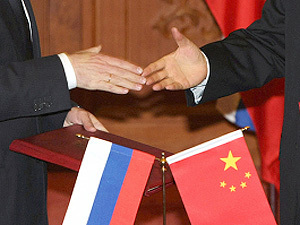
Extremely high population density is observed not only in Mumbai or Beijing. So, not only are the residents of overpopulated China (1.359 billion), but also residents of overpopulated India (1.221 billion), as well as Indonesia, Pakistan, Brazil, Nigeria, etc., biding their time, waiting until the governments of the Russian Federation and the United States remove the guard bears and machine gun nests surrounding the perimeters of Siberia and Alaska. The fur cap and warms boots have already been purchased in advance. Yes, it’s the Arctic, the promised land!
In short, the anti-Chinese propaganda is clearly delusional and is aimed at people with low analytical abilities and a lack of any knowledge in the field of ethnography, politics, history and economics. This propaganda exploits the primitive archetypes of illiterate citizens and the fact that “there are a lot of Chinese people, they are yellow-skinned and want to take away our food”.
Abdol-Reza Mousavi-Bafrui of the Institute of Iran Eurasian Studies states that Western propaganda is being used to inflate fears of China in Russian minds in order to divide the alliance between Russia and China. In his opinion, one of the enduring arguments evolving from the pessimistic views on the development of relations between Moscow and Beijing is the possibility of seizing the sparsely populated, but rich in natural resources, areas of Russia by the most populated country in the world.
But what is really going on?
From July 5 to 12 of this year, Russia and China held large-scale naval maneuvers in the Gulf of Peter the Great, off the coast of the Primorye Territory in Russia. They were attended by eight Chinese navy ships and 12 ships of the Russian navy.
Russia and China have held joint military exercises since 2003. The cooperation between the armed forces of China and Russia has been carried out within the framework of the common maneuvers code-named Union 2003, Peace Mission-2005, Peace Mission 2007, Peace Mission 2009, Peace Shield-2009, Peace Mission-2010, Marine Interaction 2012 and Peace Mission 2012. The recent Sea Interaction exercises (held in July 27 to August 5 of this year in the Chelyabinsk region) were part of anti-terrorist maneuvers between the two countries under the name of Peace Mission 2013.
Are the insidious Chinese preparing to grab a foothold in Siberia? However, following this logic one can come to the point that the cunning Japanese are preparing to attack the United States, when taking part in joint Japan-U.S. military exercises. However, this is not the case.
The Keen Sword exercises that the United States and Japan have conducted regularly since 1986 were initially declared a counter strategy measure against the “Soviet threat”. The Soviet threat ended in 1991 with the collapse of the Soviet Union, but the exercises have continued. Only the threat has changed. This time round, the United States is threatened by the North Koreans.
Obviously, the North Koreans are threatening the United States and Japan more and more, as the scale of exercises is growing every year , and the main purpose of the maneuvers in 2012 was to develop operations off the Nansei Islands, including the Senkaku Islands, which are under dispute with China. It is not clear, since when Kim Jong Un laid claim to the Senkaku Islands, but that is how it is.
Recently, the armed forces of the United States and Japan have worked out joint actions under the framework of a new strategy of the Obama administration – Return to Asia. The purpose of Washington’s foreign policy efforts is cementing a broad anti-Chinese military-political bloc, where Uncle Sam is trying to drag in Australia, India, the Republic of Korea, Vietnam and some countries in South-East Asia . As for Japan, it has long been standing to attention before the Stars and Stripes.
The fact is that the Land of the Rising Sun is not a nation of peace, as it is written in its constitution. According to military spending, it ranks fifth in the world (if we take the European Union as a single state association) directly behind Russia. Russia plans to spend $71 billion in 2013, Japan has already spent $57 billion in 2012. It should be noted, however, that all of Japan’s military power is concentrated in the Far East, while Russia has to also cover two main areas – the west and the east, and even take into account the Islamist threat from the south.
A few days ago the Ministry of Defense of Japan stated that Japanese armed forces’ landing capabilities should be the same as that of the U.S. Marine Corps. Not bad, eh? Tokyo, we must admit, has some very ambitious plans. The expansion of these capabilities is motivated by the territorial dispute with China over the ownership of the Senkaku Islands. But who can guarantee that strengthened Japanese assault troops would not be used to capture the South Kuril Islands?
Now, Japan has territorial claims to Russia that it has no intention to relinquish. China, however, has no claims against Russia, but there is an island dispute with Japan. This raises a simple question: What kind of person on the Russian side in the current political and military situation would name China as an enemy? Such a person would only be one who was bought with the money of some American foundation “for the development of democracy“.
Konstantin Penzev, a writer, historian and columnist, exclusively for the online magazine “New Eastern Outlook”.
